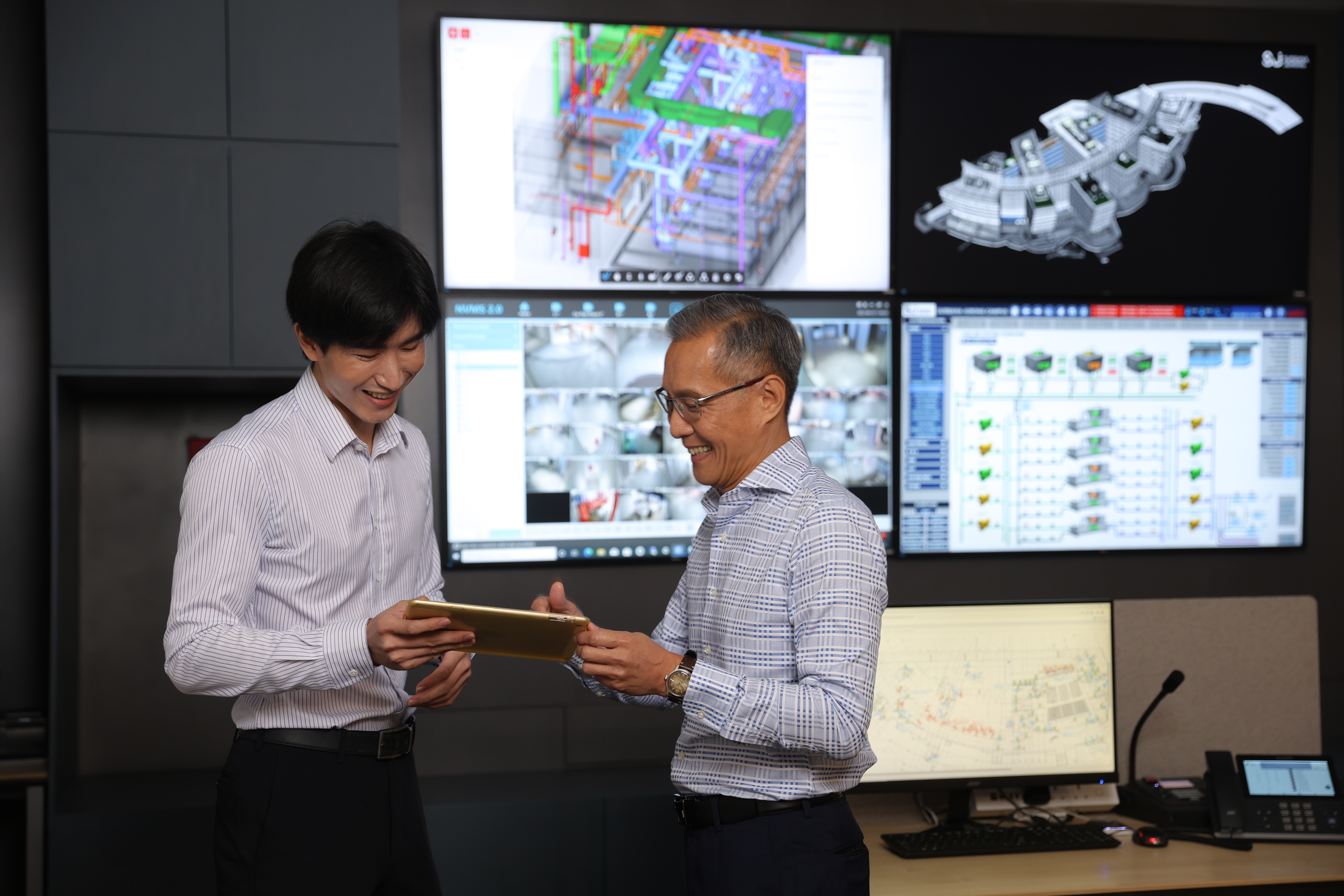Transitioning from Passive to Active Management is Key to FM Decarbonisation

James Chan
Managing Director, SMM, the Facilities Management arm of the Surbana Jurong Group
Singapore is bracing itself for a very hot month, on the heels of many other countries in Europe that have been experiencing extreme heat waves.
More than ever, facilities management plays a critical role in driving decarbonisation in the built environment, given that 39 per cent of global energy related to carbon emissions, and 28 per cent are emitted from the energy required to heat, cool and power buildings alone.
Facilities management has had to transform itself to achieve net zero goals. Traditional FM practices tend to be reactive by nature, relying heavily on responding to feedback from building occupants and putting out fires—sometimes literally. This makes it difficult for facility managers to incorporate sustainability into buildings, given that sustainability for built assets—renewable energy, circular economics, and waste management—is a complex and dynamic field with many moving parts. The mentality of the passive operational approach narrows the field of view for FM firms to the bare minimum, limiting the potential of FMs in decarbonisation.
FMs Must Know How to Harness Technology
Data is an important enabler in FM transformation. Technology has enabled buildings to gather critical information and data that can aid owners and facilities managers in mapping out better sustainability management plans. But getting to that data and making it work for the sustainability goals of clients, owners, and operators is a significant task that requires both technological and organisational transformation.
With advancements in Internet of Things (IoT), Artificial Intelligence/Machine Learning, and blockchain technology, immense volumes of data that circulate freely across a built asset can be aggregated, studied, and acted upon.
It is increasingly common for sensors to be installed across an asset to gather real-time data on emissions, water usage, occupancy, and odour levels. Progressive FM practitioners are developing common data environment platforms that integrate the data gathered from these sensors to manage and predict faults, M&E system failures and rectify these faults before they disrupt operations, optimise cleaning and pest control works. Integrated platforms monitor M&E systems such as air-conditioning, which keep spaces at optimum temperatures, supplying the right amount of cool air for a precise duration to keep occupants cool before it gets uncomfortable.
Smart FM technology can keep track of multiple, interconnected systems and their relationships as well as portfolio-level trends and movements that is too tedious when performed manually. Coupled with new modelling technology, this can be achieved at multiple levels of resolution for finer granularity too: at the square metre level, at the level of equipment, and at the level of individual BIM elements.
Smart FM Must be Accessible & Strategic
Meaningful asset data cannot be harvested overnight and haphazardly. Simply collecting data without caring about quality can quickly become a garbage in, garbage out exercise. The FM sector must spend time thinking about, planning for, and properly collecting high quality asset data to support sustainability. True FM value-add for green building management is derived from overlaying data to glean insights for optimisation, prediction, and improvement across the length and breadth of the interconnected built asset.
A right mix of FM technology and talent has become increasingly important, particularly in extreme weather conditions like the current wave that parts of the world are experiencing now.
A seasoned FM practitioner knows the importance of optimising energy efficient cooling systems to make sure energy costs do not escalate when the heat intensifies. A seasoned practitioner knows that reducing the amount of outdoor air running through ventilation systems will keep indoor temperatures optimal. This can be done by dehumidifying and cooling down outdoor air. Experienced FM practitioners will know they can use data to study usage patterns and monitor the demand for cooling to calibrate calculations, taking into consideration areas with higher exposure to infrared radiation from the sun.
FM services of the future will require investments in data collection, storage, processing, and analysis technologies as well as improved connectivity and cybersecurity solutions for a watertight data management ecosystem. At the same time, efforts need to be scaled for better training, adoption, and upskilling to ensure that data once collected can be harnessed by practitioners.
These measures will make smart FM more accessible to clients as well, since better FM expertise and infrastructure can help owners “plug and play” smart solutions that improve their facility management and sustainability monitoring.
FM firms that have invested in developing these solutions and accessibility for clients can serve as strategic partners to asset owners and operators. With the knowledge, experience, and track record enhanced manyfold by smart FM technologies, FM firms can guide the built environment industry to a new, more sustainable horizon.
FM Needs to Prepare for the Future
The future holds both risks and rewards for the bold and adaptive FM firm. The headwinds of an ageing FM workforce compounded by the expansion of progressive wage models should be an impetus to move towards leaner, smarter, and less labour-intensive FM—not simply to cut costs but also to improve safety, raise productivity and wages, and enhance user and stakeholder experiences, all while promoting sustainability.
Achieving this will require a new, whole-of-industry consensus and framework on how gaps and challenges in FM can be tackled, how sustainability and digitalisation can be accomplished, and how design, planning, construction, and operation, can be connected to technology and multi-disciplinary, multi-typology expertise. The future will require front-end design integration with downstream operational consciousness. In plain language, it will require the industry to think of the past, present, and future—it will require the industry to learn to be more active and strategic with its assets, clients, and data.


